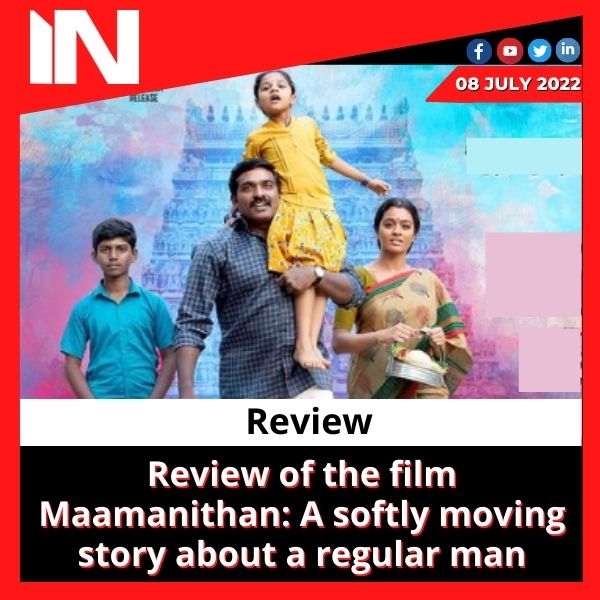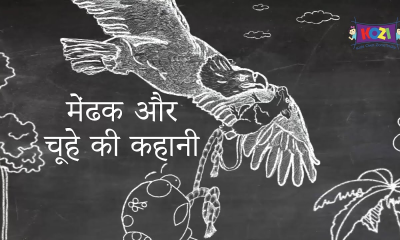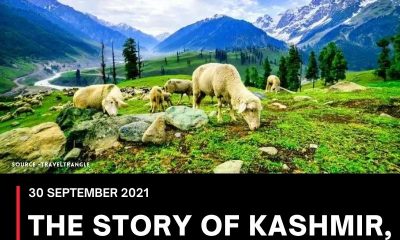Bollywood
A Story About Madan Mohan
Madan Mohan Kohli (25 June 1924 – 14 July 1975), better known as Madan Mohan, was an Indian music director of the 1950s, 1960s, and 1970s. He is considered one of the most melodious and skilled music directors of the Hindi film industry. He is particularly remembered for the immortal ghazals he composed for Hindi films. Some of his best works are with singers Lata Mangeshkar, Mohammed Rafi and Talat Mahmood.
Early years
Born on 25 June 1924, at Baghdad where his father Rai Bahadur Chunilal Kohli was working as an Accountant General with the Iraqi Police forces, Madan Mohan spent the early years of his life in the Middle East. After 1932, his family returned to their home town of Chakwal, then in Jhelum district of Punjab, British India. He was left in the care of a grandparent while his father went to Bombay to seek business opportunities. He attended local school in Lahore for the next few years. During his stay at Lahore, he learnt the basics of classical music from one Kartar Singh for a very short period, however he never received any formal training in music. Some time later, his family moved to Mumbai where he completed his Senior Cambridge from St. Mary’s School in Byculla Mumbai. In Mumbai, at the age of 11 years, he started performing in children’s programmes broadcast by All India Radio. At age 17, he attended the Colonel Brown Cambridge School in Dehradun where he completed a year’s training.
Career
He joined the Army as a Second Lieutenant in the year 1943. He served there for two years until end of World War II, when he left the Army and returned to Mumbai to pursue his musical interests. In 1946, he joined the All India Radio, Lucknow as Programme Assistant, where he came in contact with various artists such as Ustad Faiyaz Khan, Ustad Ali Akbar Khan, Begum Akhtar, and Talat Mahmood. During these days he would also compose music for programmes to be broadcast on All India Radio. In 1947, he was transferred to All India Radio, Delhi where he worked for a short period. He was very fond of singing, and so in 1947 he got his first chance to record two ghazals penned by Behzad Lucknawi, Aane Laga Hai Koi Nazar Jalwa Gar Mujhe and Is Raaz Ko Duniya Jaanti Hai. Soon after, in 1948 he recorded two more private ghazals penned by Deewan Sharar, Wo Aaye To Mahfil Mein Ithlaate Huye Aaye and Duniya Mujhe Kahti Hai Ke Main Tujhko Bhoolaa Doon. In 1948, he got his first opportunity to sing a film duet Pinjare Mein Bulbul Bole and Mera Chhotasa Dil Dole with Lata Mangeshkar under composer Ghulam Haider (composer) for the film Shaheed, though these songs were never released or used in the film. Between 1946 and 1948, he assisted music composers S.D. Burman for Do Bhai, and Shyam Sundar in Actress.
Music director
He scored his first big break with the film Aankhen in 1950, which marked the beginning of a long lasting collaboration with Mohammed Rafi, his next film was Adaa which saw the beginning of a long lasting collaboration with Lata Mangeshkar; both would go on to sing for many of his films. Two of his composed songs for Sharabi – “Sawan ke maheeney mein” and “Kabhi na Kabhi koi na koi toh aayega”, both filmed for Dev Anand are among the most well known renditions of Mohammed Rafi. In addition, his other compositions like “Wo Chup Rahen To” from the film Jahan Ara (1964) and “Maine Rang Li Aaj Chunariya” from Dulhan Ek Raat Ki (1966) are two similar examples. Madan was also able to write songs for male singers such as Talat Mahmood (Phir wahi Shaam, wahi gham, wahi tanhaayee hai, Main Teri Nazar Ka Suroor Hoon and Teri Aankh Ke Aansoo from Jahan Ara, and Meri Yaad Mein Tum Na from Madhosh) and Mohammed Rafi (Ek Haseen Shaam Ko from Dulhan Ek Raat Ki, Kisi Ki Yaad Mein from Jahan Ara, Main Nigahen Tere Chehere Se from Aap Ki Parchaiyian, Aap Ke Pehlun Mein Aakar Ro Diye from Mera Saaya, Ye Duniya Ye Mehfil Mere Kaam Ki Nahin from Heer Ranjha, Tere Dar Pe Aayaa Hoon from Laila-Majnu, the all-time haunting Meri Awaaz Suno and Tumhare Zulf Ke Sayen from Naunihal, Teri Aankhon Ke Siva Duniya Mein from Chiraag as well. Madan did not usually employ Kishore Kumar. Nonetheless their partnership created songs as well; in this category fall songs such as Simti Si, Sharmai Si from Parwana, Zaroorat Hai, Zaroorat Hai from Manmauji, the title song from Ek Muthi Aasman, Mera Naam Abdul Rehman from Bhai Bhai, and Aai Hasino, Naazanino from Chacha Zindabad. Madan often collaborated with lyricists Raja Mehdi Ali Khan, Kaifi Azmi, and Rajinder Krishan, Sahir Ludhianvi and Majrooh Sultanpuri for his movies.
In 1957 he came out with a film named Dekh Kabira Roya in which the legendary singer Manna Dey gave his voice to the melodious Kaun Aaya Mere Man Ke Dwaare and unforgettable numbers like Tum Bin Jeevan Kaisa Jeevan in the film Bawarchi. In addition to that, he had Lata sing Tu Pyaar Kare Ya Thukraaye and Meri Veena Tum Bin Roye numbers, and he used Talat Mahmood for the song Hum Se Aaya Na Gaya in the same movie. Once in an interview Manna Dey recalled that Madan Mohan asked him to take special care when singing Kaun Aaya Mere Man Ke Dwaare.
A film scored by Madan was Chetan Anand’s Haqeeqat (1964), starring Balraj Sahni and Dharmendra and based on the Sino-Indian War of 1962. In it, he used Rafi, who sang numbers like Kar chale hum fida, Main Yeh Soch Kar. Lata was used for the song Zara Si Aahat Hoti Hai and the unscreened ” Khelo na mere dilse”. And the same film saw Rafi, Talat, Manna Dey, and Bhupendra singing Hoke Majboor Mujhe Usne Bhulaya Hoga. Bhupendra appeared on the screen as well for the first time, much before he established himself as a playback singer. This song is also the only song in which four top-rated male playback singers have put voices together in a song. In 1966, he again paired with Lata Mangeshkar for Mera Saaya.
Madan Mohan’s venture was Raj Khosla’s version of “Woman in White”, titled Woh Kaun Thi?. This film has three Lata solos (‘Naina barse rim jhim rim jhim’, ‘Lag ja gale’ and ‘Jo humne daastaan apni sunayee’) and a Lata duet.
The late fifties, sixties and the early seventies were the most productive period in Madan Mohan’s career. His songs from those decades include compositions for films like Adalat, Anpadh, Dulhan ek raat ki, Mera Saya, Dastak, Hanste Zakhm, Heer Raanjha, Maharaja, and Mausam, among many others. His second last bow was for a film released five years after his death, Chalbaaz. In 1970, during the changing times of western music he gave music based on ragas for Rajinder Singh Bedi’s Dastak and won his only 1971 National Film Award for Best Music Direction. Its songs sung by Lata Mangeshkar are still considered her finest.
His legacy wouldn’t be complete without mentioning the ghazal he composed for the movie “Dil Ki Rahein” – “Rasm-e-ulfat ko nibhaein to nibhaein kaise”. The shayar(lyricist) for the ghazal was Naqsh Lallayalpuri and it was sung by Lata Mangeshkar. It is considered one of the best songs sung by Lata Mangeshkar, ever.
Madan Mohan’s son Sanjeev Kohli recreated 11 of his late father’s unused compositions for the soundtrack of the 2004 Yash Chopra film Veer-Zaara. Later on, Kohli brought out an album “Tere Baghair” which contains some of Madan Mohan’s songs.
Bollywood
Food blogger attacked by Swara Bhasker for boasting about being a vegetarian on Twitter: “Smug self-righteousness”

In response to food blogger Nalini Unagar’s “proud to be a vegetarian” tweet, actor Swara Bhasker attacked Unagar. On Sunday, Nalini posted a photo of her lunch at X. It included a paneer dish and fried rice.
What was said by the food blogger?
Nalini shared the picture and added, “I’m happy to be a vegetarian. There are no more tears, cruelty, or guilt on my platter.”
This is Swara’s response.
In response, Swara penned, “To be honest… I find vegetarians’ arrogant self-righteousness to be incomprehensible. Denying the calf its mother’s milk, forcing cows to become pregnant, ripping them from their calves, and taking their milk are the main components of your diet.”
Furthermore, she said, “You eat root vegetables? That eliminates the entire plant! Just because it’s Bakr Eid, don’t stress about virtue signalling (folded hands emojis). June 16–17 is when Bakr Eid, or Eid al-Adha, is observed.
Swara just had her Eid celebration.
A few months after celebrating Eid al-Fitr, Swara posted a tweet. She celebrated the occasion with her daughter Raabiyaa and spouse Fahad Ahmad. On her Instagram Stories, Swara posted snippets of her Eid festivities. Swara and Raabiyaa were shown in one of the stories pointing at the Eid ka Chaand. Another photo shows Swara, her daughter, and Fahad posing as a family. Fahad is Muslim, but Swara is Hindu.
When Swara discussed the cultures of her and Fahad
Swara performed a chhathi puja for Raabiyaa the previous year. She revealed tidbits from the festivities and reported discovering shared cultural experiences with Fahad’s family. “The child is a mish mash of the mish mash we are,” Swara had wrote. She therefore has 62.5% UP, 12.5% Bihar, and 25% Andhra. Furthermore, I support representation and am always up for a celebration! Furthermore, since our wedding, we’ve learned that Muslims and Hindus in North India have common cultural customs, which strengthens my conviction that, despite our variety, love and joy will always find a language.”
“Chhathhi, or the sixth day of a child’s birth, is celebrated throughout UP Bihar. Mom and kid dress in the colour of turmeric or haldi, and aunts or bua put kaajal on the child and parents to protect them from ‘nazar,’ or the evil eye! I’m performing a well-known “sohar”—celebration songs for new babies. Although sohars are often used to celebrate newborn boys, I customised it for a newborn girl—oh! And although sisters and aunts sing the sohars, mothers don’t, so I thought, “Why not?” Dholak aa gaya hai! Thank you to @manisha2967 for the Chhathhi lesson and the beautiful singing I was able to do, and to Bhanu ji @partapsinghb11 for the dholak that helped make my singing pleasant.
Group Media Publications
Entertainment News Platforms – anyflix.in
Construction Infrastructure and Mining News Platform – https://cimreviews.com/
General News Platform – https://ihtlive.com/
Podcast Platforms – https://anyfm.in
-

 Web Series1 month ago
Web Series1 month agoSpoilers for Star Wars: The Acolyte, episode three: The new episode has caused the internet to go crazy.
-

 Music2 months ago
Music2 months agoDalton Gomez, Ariana Grande’s ex, makes his Instagram debut alongside his new partner Maika Monroe.
-

 Music2 months ago
Music2 months agoMin Hee-jin will continue to serve as ADOR’s CEO, and following the shareholders’ meeting, HYBE names three new board members.
-

 Entertainment2 months ago
Entertainment2 months agoSawa Pontyjska, a Ukrainian model, is suing the Cannes Film Festival organisers, alleging that a security guard assaulted her on the red carpet.
-

 Hollywood1 month ago
Hollywood1 month agoDeadpool and Wolverine might shatter box office records, which would be unprecedented for an R-rated film.
-

 Entertainment2 months ago
Entertainment2 months agoKai Cenat, a Twitch celebrity, travels to Taiwan for this poignant occasion.
-

 Music1 month ago
Music1 month agoBianca Censori’s obscene Tokyo ensemble provokes indignation in Japan. while Kanye West flies economy after losing…
-

 Hollywood2 months ago
Hollywood2 months agoMovie Review: ‘Am I OK?’ is a charming comedy about friendship that features Dakota Johnson’s endearing genuineness.






















